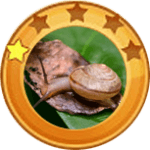- Home
- Shop
- Forest Series
- Grassland Series
- Desert Series
- Contact
- Home
- Shop
- Forest Series
- Grassland Series
- Desert Series
- Contact

Snail Series





2 Ways in Controlling
With the help of 2 simplified joysticks and a boat-shaped switch, your child can drive this car independently. Parents can also use the included remote control to master direction and adjust speed for younger kids.
Robust & Safety
Tough plastic shell holds up to 66 lbs for years of use. A 4-point adjustable seat belt and soft rubber bumper strip offer double protection. A wide footrest and high backrest make your baby feel relaxed and comfortable.
Excellent Performance
Powered by 2 rechargeable 6V batteries that let your kids enjoy 45-60 minutes of riding fun. Equipped with 12V dual motors, this vehicle speeds up to 2 mph to provide your little one with an exciting battle experience.


CHARACTERISTICS
The Chipmunk is a member of the family Mammalia, Rodentia and Sciuridae. It is also known as the Striped Squirrel, the Timber Tiger and the Mini-bear. The body length among most Chipmunks ranges from 5.5 to 6.3 inches and the tail length is 5 Inches. Chipmunks typically weigh about 0.02 pounds and live about 5 to 10 years. They have small but prominent ears which face forwards, and small eyes on the sides of their heads. Most wild Chipmunks are lively.


Lorem ipsum dolor sit amet, consectetur adipiscing elit. Ut elit tellus, luctus nec ullamcorper mattis, pulvinar dapibus leo.


CHARACTERISTICS
Bradybaena similaris, the Asian Trampsnail, is a species of small, invasive land snail. The width of the shell is about 12 to 16 mm with 5+1⁄2 whorls. The color of the shell is light brown, often with a single, apical chestnut band. The shell is sculptured with fine, irregular growth lines and fine spiral striae. The lip of the adult shell is reflected and the columella is partially covering the umbilicus.

RANGE AND HABITAT
This species is native to Southeast Asia, but it has been accidentally introduced to many areas around the world. The distribution includes: Pratas Island, Taiwan
The introduced distribution includes states on the Gulf of Mexico, and it is widespread in Florida, USA. It has become widespread in Eastern Australia, usually living in association with exotic weeds. It can be found on Reunion island, Mayotte and Mauritius, New-Caledonia, Wallis and Futuna and French Polynesia.

DIET
The Asian Trampsnail primarily consumes live plant matter, such as growing vegetables or plants like arugula. They are known for being destructive to gardens and crops because of their eating habits. It has also been observed consuming coffee rust and the mycoparasite Lecanicillium lecanii.

BEHAVIOR
Habits and Lifestyle
As an introduced species, the Asian Trampsnail is often found in areas with tall grasses and high humidity. Typically, this species is found in gardens, greenhouses, and similar habitats, sometimes retreating under logs or fallen branches. This species is often common with abundant old shells on the ground and among leaf litter, as well as on vegetation and on trees. It is active after rainfall. Dundee and Cancienne reported that this snail can survive winters in Louisiana where the temperature can fall as low as 5-10°C.
Mating Habits
The Asian Trampsnail breeds once a year and lays eggs mostly between April and May, mostly in loose, moist soil between roots, in crevices, under dead leaves or rocks. Each adult can lay 30-235 eggs. Most of the adult snails overwinter under the straw piles of crops or in the soil of winter crops, while the juveniles can also overwinter in the soil of winter crop roots.

The Chipmunk is a member of the family Mammalia, Rodentia and Sciuridae. It is also known as the Striped Squirrel, the Timber Tiger and the Mini-bear. The body length among most Chipmunks ranges from 5.5 to 6.3 inches and the tail length is 5 inches. Chipmunks typically weigh about 0.02 pounds and live about 5 to 10 years. They have small but prominent ears which face forwards, small eyes on the sides of their heads. Most wild Chipmunks are lively.
The Red Squirrel, a member of the Sciuridae, is an arboreal, omnivorous rodent often referred to as a Forest Seeder and folklore as the Devil King Squirrel.
The Arizona Gray Squirrel, also known as the American Gray Squirrel, is a member of the family Rodentia and Sciuridae. It is small in size, with gray fur and a belly between white and cream. It has long ears, no tufts of fur and a fluffy tail edged in white. The body is about 16-20 inches long and weighs up to 1.4 pounds.
The Rock Squirrel, also known as Sao Maozi or Stone Mouse, belongs to the rodent and is a species in the family Sciuridae. The most common natural predators of the Rock Squirrel include bobcats, owls, eagles and snakes. Though the Rock Squirrel is cute, alert, and courageous, it is still considered a pest due to its habit of destroying crops.
The Abert’s Squirrel is a member of the genus Sciurus with a body length of 18-22.8 inches, a tail length of 7.5-9.8 inches and a weight of 2.2 pounds, and can live up to 10 years in the wild. Its most distinctive feature is tassels of fur about 0.8-1.2 inches long at the tip of its ears, which looks very interesting. In addition, it is alert and agile.

The Tortoise, the Hare… and the Snail
Once upon a time there was a tortoise, a hare, and a snail. The hare was always boasting about how fast he was, and the others were growing tired of his bragging. So one fine day, the tortoise challenged him to a race. He told the hare, “Well, you might think you’re so fast, but I can beat you in a race!”
Hearing this, the hare burst out laughing so hard he almost fell down his rabbit hole. “Ha!,” he exclaimed. “You couldn’t even outrun Little Miss Snail over there. I accept your challenge.”
The race was on!
The next day, all the animals of the meadow came out to see them begin. At the starting line was the hare, the tortoise, and the snail (you didn’t think she’d let the hare bully her, did you?) The hedgehog announced “On your mark, get set, and… go!!!”
And so they were off.
If you’ve heard this story before, you may remember who won the race. The hare was so overconfident about winning that he decided to take a nap, certain there was no way the tortoise could win. Of course that’s exactly what the tortoise eventually did, crossing the finish line just as the hare awoke from his nap and belatedly tried to catch up.
But this isn’t the whole story. What about the snail, whom we last saw disappearing into a tuft of grass just past the starting line?
Well, as it turns out, she was having quite the adventure of her own.
After she entered the cool shade of that tuft of grass, she drank some drops of dew still left over from the early morning. Refreshed, she slowly made her way up a big hill, meeting lots of other small animals along the way. She hitched a ride on the back of a caterpillar, played games with a family of ants, and took a nap of her own later in the afternoon.
In fact, she found herself having so much fun that she entirely forgot all about the race, preferring instead to pursue her own adventures.
At one point she heard some celebrating in the direction of the finish line, accompanied by a hare screaming “No!!! It can’t be!!!!” She smiled to herself and resumed listening to the crickets in the field make their sweet music. When, a few days later, she finally passed by the tattered remnants of ribbon that said “Finish line,” she was too engrossed in her own adventures to pay much attention to it.
Instead, the snail kept going and going, becoming interested in one thing, and then another and another and another. She ended up making lots of varied and interesting friends, and had one exciting adventure after another.
Many years later, she looked back on a happy and exciting life filled with ups, downs, and everything in between. What had started out as a short race turned out to be a journey. A wondrous journey.



Follow Us: